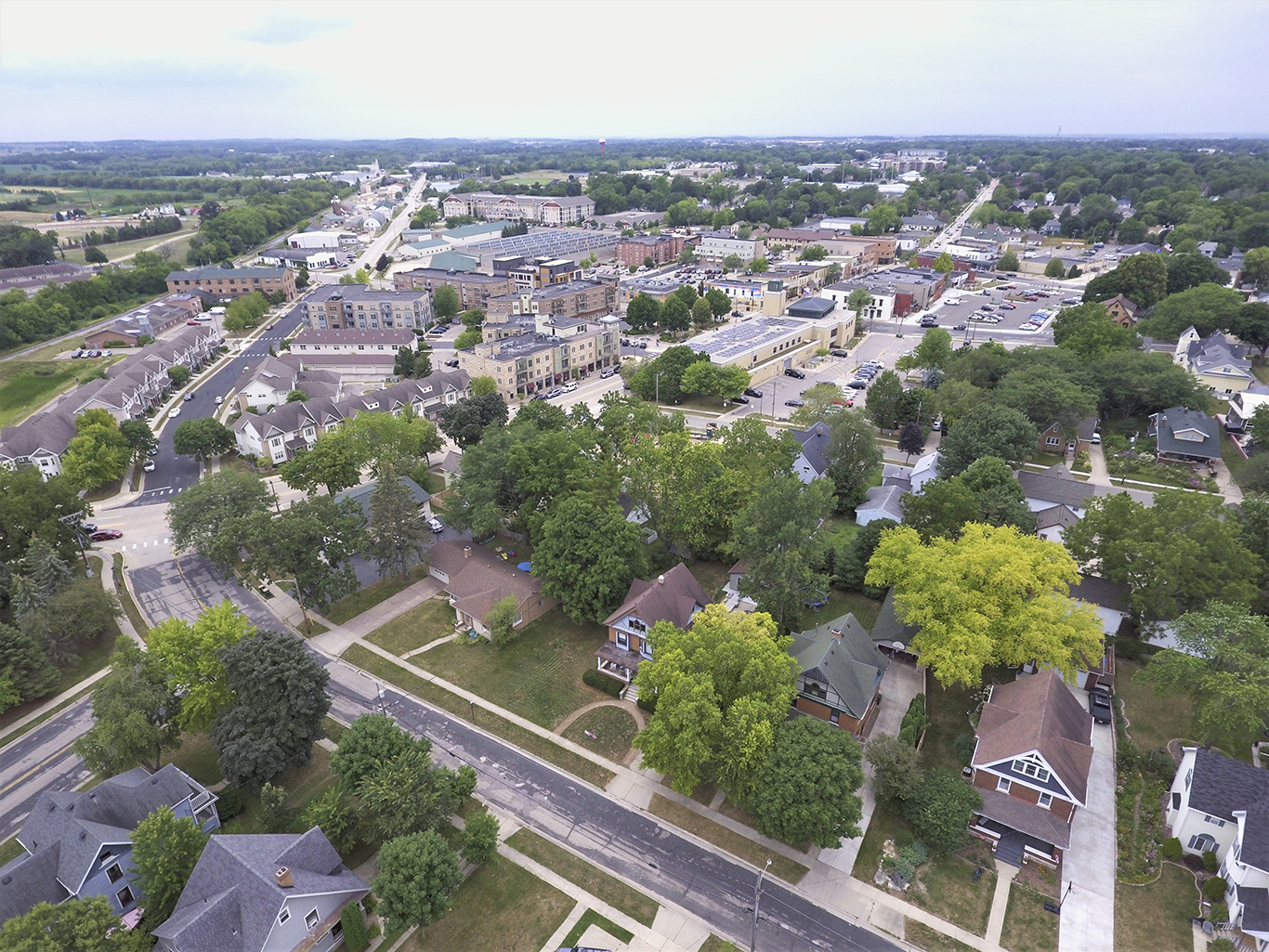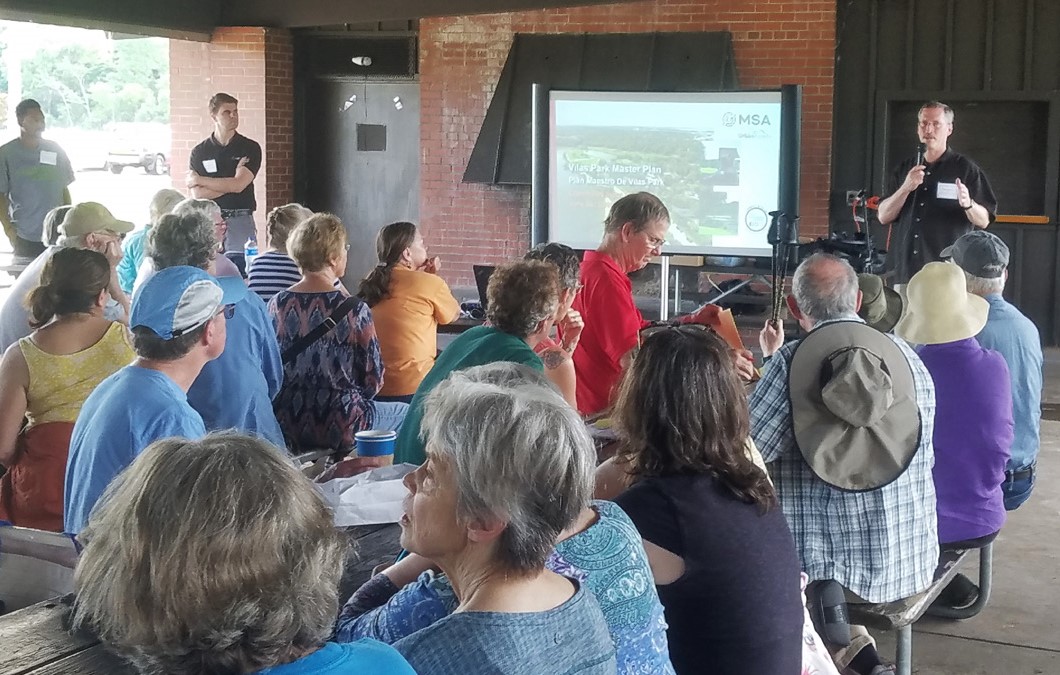When we think of planning, there are a number of documents that come to mind: comprehensive plans, downtown plans, comprehensive outdoor recreation plans (CORPS), park master plans, and bike and pedestrian trail plans – among many others. No matter the size of your community, planning can be a significant investment. Plans are ephemeral. The documents we put together will likely be forgotten in 20 years. And when they’re complete, the results aren’t immediately visible like a newly reconstructed roadway or a new splash pad.
But they matter, and they’re worth the investment, because the decisions they guide are 100-year decisions. When you update a park, that new park layout will likely hold well into the 2100s. And as new streets and neighborhoods are approved? Those are century decisions too.

Land use and design decisions have a long life. It’s exciting to see change, but it’s important to keep in mind how slowly things tend to change once things go into the ground. Planning fosters the intersection of careful analysis and fresh ideas, all informed by a tailored public engagement process that ensures the voices of the community members of today are heard. Engagement efforts improve plans and give elected leaders the confidence to proceed with tough decisions.

Paying for the hard costs of planning is not difficult. Plans serve as validation of a cohesive community vision, which can lead to greater opportunities to secure grant funding. Oftentimes, one singular grant provides more than enough funding to cover the cost of the upfront plan itself. There are legacy benefits related to planning efforts too, such as increases in the taxable value of property and efficiencies gained through early planning for things like municipal infrastructure, housing and transportation networks. If there is a long-term plan for where and when development will occur, there is opportunity to build out utility extensions, fiber optics, water or storm sewer connectors in advance. This saves communities costly excavation, rework and piecemeal construction projects down the road.
Under-prioritized planning efforts can also manifest as opportunity loss. If a community lacks planning documents, it can be perceived as a lack of clarity surrounding growth. Developers may be less inclined to work with communities for fear of a lengthy project approval process or insurmountable public opposition. Plans provide transparency, consistency and a pre-determined roadmap for implementation. They are the reference documents against which decisions are made and progress measured.
There are numerous ways a community can phase and bundle planning efforts to maximize the investment.
- Evaluate opportunities for project overlap relative to geography, construction schedules and funding. For example, a downtown revitalization plan might pair well with façade rehabilitation projects or tax increment financing (TIF) programs, with funding and schedules working in tandem to positively impact downtown districts.
- Consider the pursuit of mini, master and regional planning efforts in conjoined phases or in partnership with neighboring communities to help share cost and maximize impact. Park and recreational projects are a great fit for this approach.
- Bundle public engagement programs when undertaking a multi-plan effort. Oftentimes, planning steering committee members can act as representatives across a number of inter-related plans or districts. Ascertain where those stakeholders and skill sets overlap to optimize time and input.
- Utilize a suite of engagement platforms and tools to reach the deepest pool of public voices, including virtual meeting programs, hybrid meetings, online surveys, in-person interviews, attendance at public events or using GIS-based crowdsourcing apps.
- Create a checklist of priority projects along with related cost estimates, funding sources and project partners to gain a bird’s-eye view of municipal wants and needs. Identify either a target fiscal year for implementation of each project or the need for an ongoing or phased approach. This strategizing will help frame long-term project timelines and action steps, and can be used as the foundation of a capital improvement plan (CIP).
Communities need to strongly consider what roadmaps they’re using for growth or whether those roadmaps even exist. For those without strategic plans in place, the time to create them is now. Communities with plans need to revisit them often and keep them up to date. Plans are a municipality’s best friend when funding becomes available and allow leaders to react quickly to opportunities and deadlines alike. With plans in place and the funding to set them into action, communities are better positioned to remain competitive, thrive economically and inspire trusted, transformational change.
